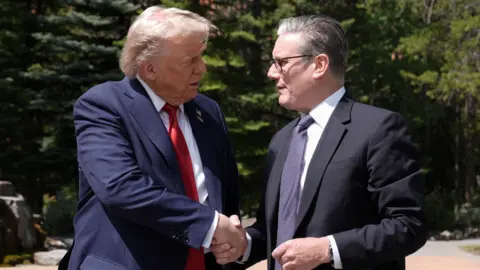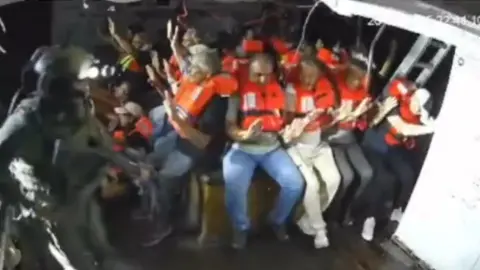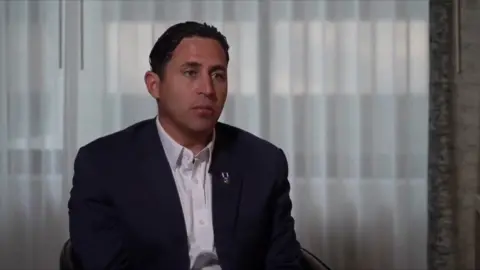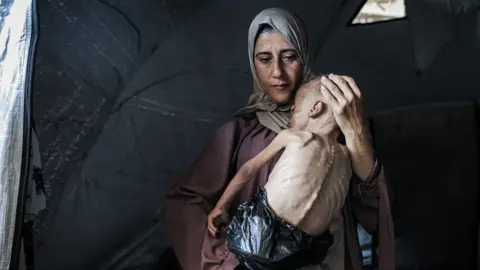Gaza Starvation: Israel's Bowen Aid & Ally Response
Is Gaza Starving? A Controversial Airdrop Reveals a Horrifying Truth.
**Imagine this:** A mother, Wafaa Harara, and her four children, killed during a supposed "tactical pause" in the fighting. This isn't some distant conflict; it's happening now, in Gaza, a place roughly the size of Philadelphia, crammed with desperate families fighting for survival. Are the recent aid airdrops a humanitarian lifeline, or a cynical PR stunt? Find out the shocking truth.
 A Desperate Airdrop: Israel's Response to the Gaza Crisis
Facing mounting international condemnation for its role in the humanitarian catastrophe in Gaza, Israel announced a series of measures. These include airdrops of aid – a dramatic image that's quickly captured global attention. But behind the headlines of flour and sugar, a much darker story unfolds. The IDF (Israel Defence Forces) claims these actions will “improve the humanitarian response,” but is that really true?
A Desperate Airdrop: Israel's Response to the Gaza Crisis
Facing mounting international condemnation for its role in the humanitarian catastrophe in Gaza, Israel announced a series of measures. These include airdrops of aid – a dramatic image that's quickly captured global attention. But behind the headlines of flour and sugar, a much darker story unfolds. The IDF (Israel Defence Forces) claims these actions will “improve the humanitarian response,” but is that really true?
 The first airdrop, a chilling spectacle of parachutes against the night sky, delivered limited supplies. Yet, even as the UAE followed suit, a stark reality emerged: an airstrike during the promised "tactical pause" led to the tragic deaths of Wafaa and her children. This raises the critical question: Is Israel truly committed to humanitarian aid, or is this a carefully orchestrated distraction?
The Gaza Humanitarian Foundation: A Controversial Solution?
The first airdrop, a chilling spectacle of parachutes against the night sky, delivered limited supplies. Yet, even as the UAE followed suit, a stark reality emerged: an airstrike during the promised "tactical pause" led to the tragic deaths of Wafaa and her children. This raises the critical question: Is Israel truly committed to humanitarian aid, or is this a carefully orchestrated distraction?
The Gaza Humanitarian Foundation: A Controversial Solution?
 To bypass the established UN aid network, Israel, with US support, created the Gaza Humanitarian Foundation (GHF). Israel claims the UN system was compromised by Hamas, a claim the UN denies, lacking concrete evidence. However, the GHF's methods have proven disastrous. Over 1,000 Palestinians have been shot while searching for food, according to UN reports. A retired US special forces colonel, who worked for the GHF, even alleges witnessing IDF soldiers and American colleagues firing upon civilians. Both parties deny these accusations.
This raises serious ethical concerns about the GHF's operational methods. Is this a truly effective humanitarian initiative, or a military operation disguised as aid distribution?
To bypass the established UN aid network, Israel, with US support, created the Gaza Humanitarian Foundation (GHF). Israel claims the UN system was compromised by Hamas, a claim the UN denies, lacking concrete evidence. However, the GHF's methods have proven disastrous. Over 1,000 Palestinians have been shot while searching for food, according to UN reports. A retired US special forces colonel, who worked for the GHF, even alleges witnessing IDF soldiers and American colleagues firing upon civilians. Both parties deny these accusations.
This raises serious ethical concerns about the GHF's operational methods. Is this a truly effective humanitarian initiative, or a military operation disguised as aid distribution?
 International Condemnation and Mounting Evidence
The international community is expressing grave concerns. Strong statements from Britain, France, and Germany demand that Israel lift restrictions on aid and allow UN agencies to operate freely. Jonathan Whittall, head of the UN's OCHA in the Occupied Palestinian Territories, has been particularly vocal, condemning the GHF's methods as creating "conditions created to kill." His visa renewal is uncertain, highlighting the considerable risks faced by those speaking truth to power. With the ICC (International Criminal Court) already issuing an arrest warrant for Netanyahu and Gallant over alleged war crimes, the pressure is intensifying.
International Condemnation and Mounting Evidence
The international community is expressing grave concerns. Strong statements from Britain, France, and Germany demand that Israel lift restrictions on aid and allow UN agencies to operate freely. Jonathan Whittall, head of the UN's OCHA in the Occupied Palestinian Territories, has been particularly vocal, condemning the GHF's methods as creating "conditions created to kill." His visa renewal is uncertain, highlighting the considerable risks faced by those speaking truth to power. With the ICC (International Criminal Court) already issuing an arrest warrant for Netanyahu and Gallant over alleged war crimes, the pressure is intensifying.
 Aid Drops: A Last Resort or a PR Stunt?
Witnessing aid drops firsthand in past conflicts – from Iraqi Kurdistan to besieged Mostar – reveals their limitations. While welcome in desperate situations where other access is impossible, airdrops are inefficient and inherently risky. Pallets often land far from intended recipients, becoming targets for desperate crowds or criminal elements. In Gaza, with its dense population and limited open spaces, the risks are amplified. The sheer logistical challenges underscore the need for a sustainable, ground-based solution.
Aid Drops: A Last Resort or a PR Stunt?
Witnessing aid drops firsthand in past conflicts – from Iraqi Kurdistan to besieged Mostar – reveals their limitations. While welcome in desperate situations where other access is impossible, airdrops are inefficient and inherently risky. Pallets often land far from intended recipients, becoming targets for desperate crowds or criminal elements. In Gaza, with its dense population and limited open spaces, the risks are amplified. The sheer logistical challenges underscore the need for a sustainable, ground-based solution.
 The question remains: Can airdrops truly solve the starvation crisis in Gaza? The answer is a resounding no. Only a sustained ceasefire and unrestricted access for aid convoys – utilizing the easily accessible Ashdod port or the Jordanian border – will provide a viable, long-term solution.
The grim reality is that Gaza, once home to over two million Palestinians, now sees its population forced into a small coastal area, living in crowded tents. This deliberate displacement, coupled with ongoing violence, is a recipe for disaster. The airdrops might look good on television, but they offer only a temporary fix to a far deeper, more systematic problem. Will the world allow this crisis to continue?
The question remains: Can airdrops truly solve the starvation crisis in Gaza? The answer is a resounding no. Only a sustained ceasefire and unrestricted access for aid convoys – utilizing the easily accessible Ashdod port or the Jordanian border – will provide a viable, long-term solution.
The grim reality is that Gaza, once home to over two million Palestinians, now sees its population forced into a small coastal area, living in crowded tents. This deliberate displacement, coupled with ongoing violence, is a recipe for disaster. The airdrops might look good on television, but they offer only a temporary fix to a far deeper, more systematic problem. Will the world allow this crisis to continue?

Image 1

Image 2

Image 3

Image 4

Image 5

Image 6
Comments
Post a Comment